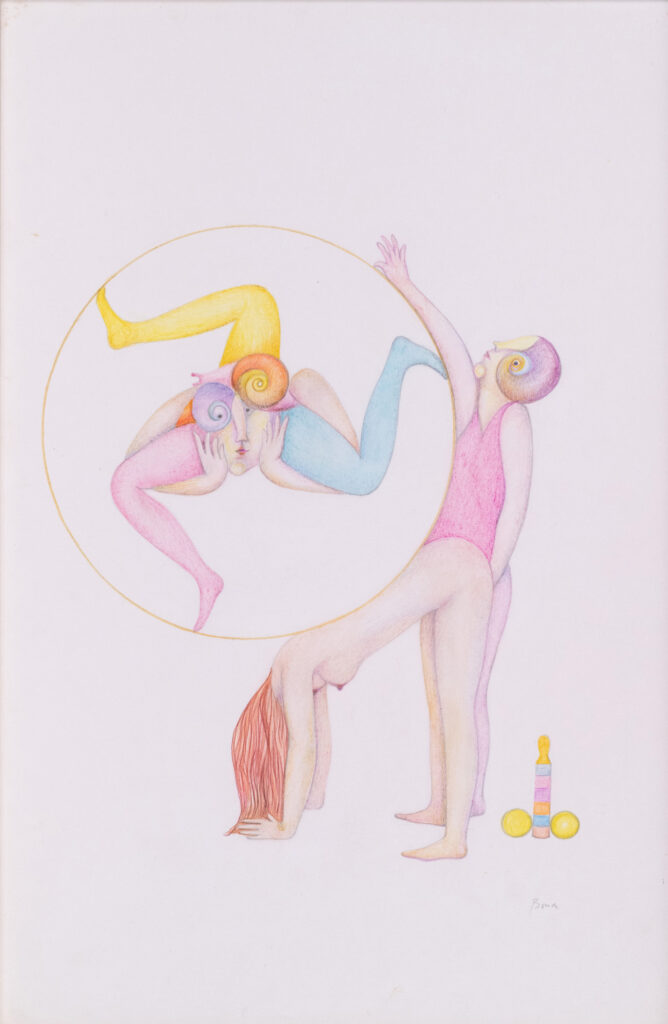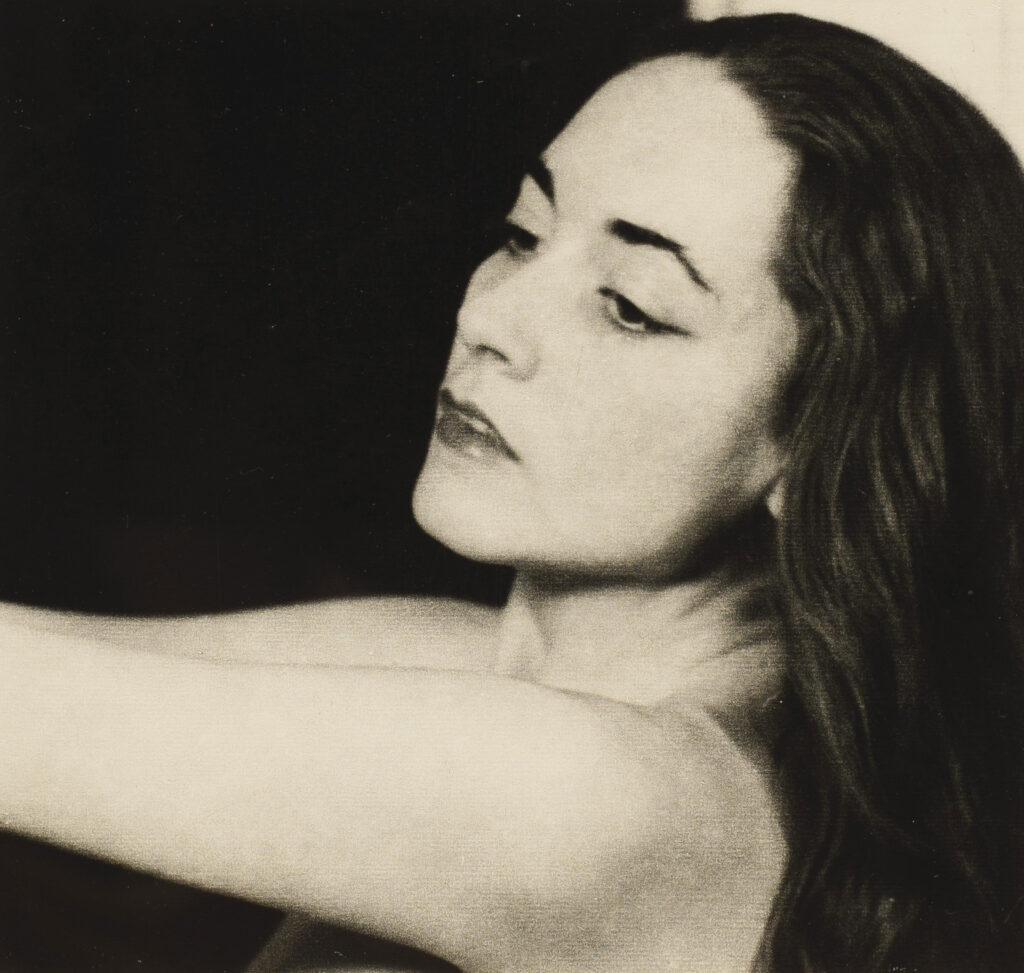Your currently viewing RAW Modern | Switch to RAW Contemporary
Series of the colimaçonneries, 1973
Catalogue essay by Blanche Llewellyn
“In the physical world, I am a woman and I must accept it. But I deny myself to be merely a woman for reasons of creative energy. Women have been relegated to mediocre, despicable roles; they have been left with only frivolity. I, on the other hand, seek to possess sobriety, rigor, and measure, virtues that men have kept for themselves. Today, I am both man and woman in unity, I am like two forces that complement each other. The snail realizes this union. Moreover, I do not have a collective spirit. I am alone like a snail. I enter entirely into my shell. No one from the outside can see the bottom of it” (Bona de Mandiargues, quoted by Alain Jouffroy in “Double présentation de la peinture de Bona” ( The Galerie de Seine, 1974).
In her series of artworks, the “Colimaçonneries” from the 1970s, Bona drew inspiration from the snail to create erotic sketches. For Bona, love and eroticism were not merely perceived as a celebration (or as an anxiety) but rather as a means of opposing a certain number of societal rules. She believed that the bisexuality of the snail opened up exciting possibilities: “If the slug mostly has analogies with the vulva and lust, the snail is the representation of the cosmic spiral”. Additionally, because the snail is hermaphroditic, it is a is self-sufficient creature and as such avoids crises of separation. Through this series of works, Bona transformed her own anguish with sexuality into a powerful artistic expression that released a form of personal liberation.
The “Colimaçonneries” series was the subject of an exhibition and catalogue at the Galerie de Seine, Paris, (6 – 31 March, 1974).

